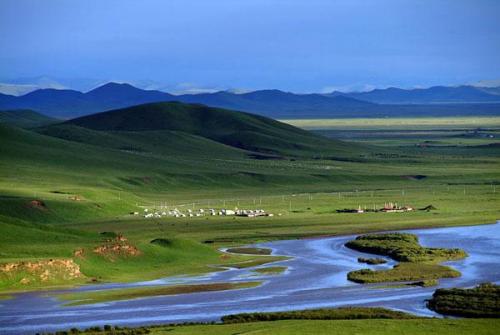'Water tower' gets warmer as climate change bites
 0 Comment(s)
0 Comment(s) Print
Print E-mail Xinhua, October 9, 2013
E-mail Xinhua, October 9, 2013
Sanjiangyuan, the origin of China's three major rivers, has and will continue to become warmer and wetter as a result of global warming, latest monitoring data showed.
The headwaters area, on the remote Qinghai-Tibet Plateau which normally features dry and cold weather, has seen its temperature rise 1.98 degrees Celsius and increasing rainfall between 1961 and 2012, said Li Lin, a senior engineer with Qianghai Provincial Meteorological Bureau.
 |
|
Sanjiangyuan, the origin of China's three major rivers, has and will continue to become warmer and wetter as a result of global warming. [File photo] |
The average annual temperature rise in Sanjiangyuan during this period is higher than the national and global average, said Li, citing an advisory report on climate change policies, based on a survey carried out by the bureau.
Statistics suggested the area has experienced more heat waves and fewer extreme cold days over the past five decades, Li said.
Due to the rising temperature, the maximum depth of permafrost in the headwaters area has decreased on average by 12 centimeters every 10 years and most of the glaciers there are melting, he said.
The report predicted that by 2100 the temperature in Sanjiangyuan will have risen 3 degrees Celsius from now. It said an increase of 1.1 degrees Celsius means 19 percent of the permafrost would thaw.
The report estimated that glacial areas in the region may shrink by 40 to 60 percent by 2100.
"Many drivers complain that roads have become more bumpy in recent years. The reason is permafrost degradation, it has caused roads to sink," said Wu Guolu, head of the provincial environmental and geological prospecting institute.





